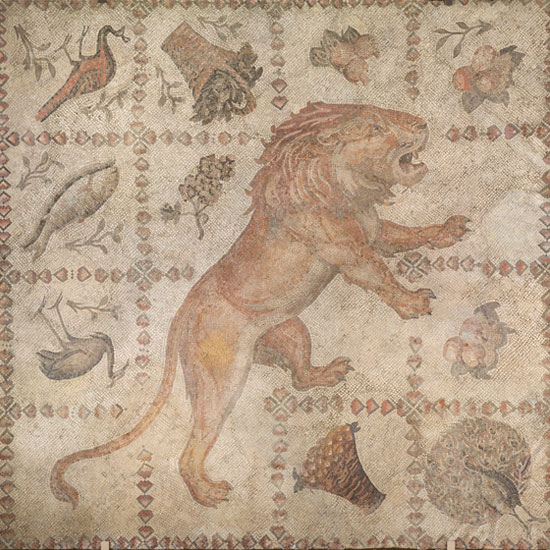Antioch Mosaics

Striding Lion. Syria (present-day Turkey). 5th century.
The Baltimore Museum of Art: Antioch Subscription Fund, BMA 1937.139
The Antioch Mosaics illustrate how the classical art of Greece and Rome evolved into the art of the early Christian era and tell the story of how people lived in this ancient city prior to its destruction by catastrophic earthquakes in 526 and 528 A.D.
They are notable for their:
- Grand scale
- Elaborately patterned borders
- Decorative and naturalistic effects
Discovery of the Mosaics - 1932 to 1939
With the support of BMA Trustee Robert Garrett, the BMA joined the Musées Nationaux de France, Worcester Art Museum, and Princeton University during the 1930s excavations of Antioch. Three hundred mosaic pavements were discovered in the affluent suburb of Daphne and the nearby port city of Seleucia Pieria.
Today Antioch is known as Antakya, and is located in southeastern Turkey, near the border of Syria.
On View
There are 24 pavements from the Antioch Mosaics on display in the Museum’s sunlit Antioch Court.